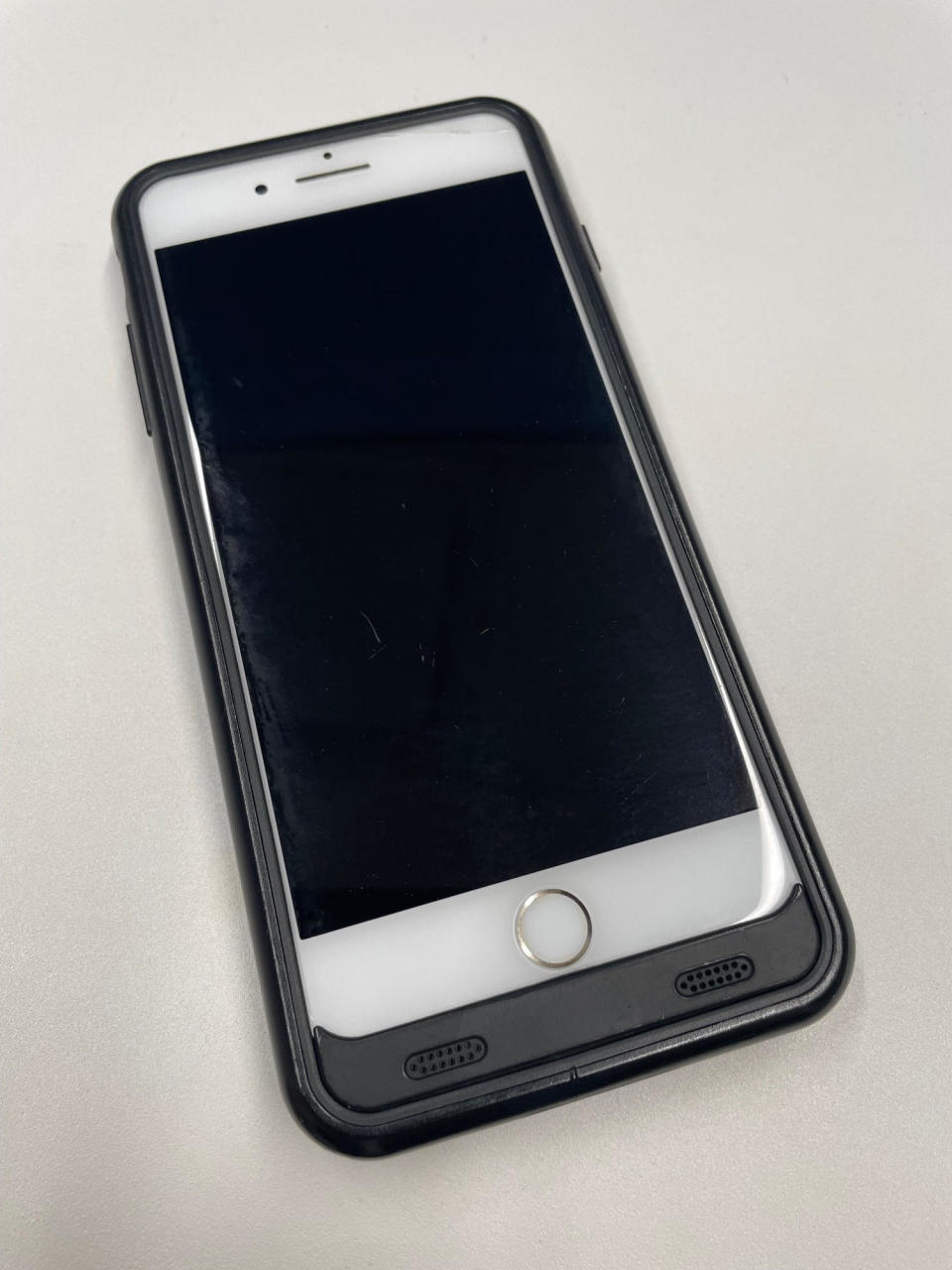NBC's Joe Fryer explains why he's had the same iPhone for seven (yes, seven!) years
You can almost guarantee that, on any given day, the oldest thing on my person is not my suit or my tie or my shoes. There’s one thing that’s slightly older: the phone in my pocket.
Yes, I'm still the proud owner of an iPhone 7 Plus — a model that was released in September of 2016. I bought mine in early 2017 for about $850.
Seven years later, when I pull the primitive device out of my pocket, friends often marvel at the phone — then promptly tease the owner.
But a wave of nostalgia soon washes over my critics when they realize what’s occupying the very bottom of the phone’s face: a home button. Yes, I still unlock my phone with my thumb, not my face, which came in handy while wearing masks during the pandemic. Friends had to admit they were somewhat jealous of the now-archaic feature.
The reason I’ve clung on to my bygone device for so long is simple: it still works. I can call. I can text. I can check my email and watch YouTube. I can take (only slightly grainy) photos. And my screen is relatively scratch-free. So why waste the money on a new phone that does most of the same stuff?
Sometimes, like a child throwing a tantrum, my phone will go through phases when it rapidly loses power, hovering at the one percent mark, constantly threatening to shut down. Usually, a software update tames the phone’s temper, and it returns to normal, sparing me a trip to the Apple Store.
(Full disclosure: NBC News does supply me with a more modern phone — an iPhone 12! — which more than compensates for anything my personal phone lacks.)
My disinterest in cell-phone technology dates back more than two decades. I was resistant to even get a cell phone in the first place, proudly declaring, “I never want to be THAT accessible.” At the time, my employer could always reach me via pager — which usually involved borrowing someone else’s cell phone to call whoever pinged me.
But friends and family were insistent that I get one and join their ranks. So, in 2003, I finally stopped dragging my feet and bought the most basic brick-phone model I could find. In the years that followed, I’ve owned a Nokia, a red Razr flip phone (a pleasure to slam shut) and a maroon Blackberry.

Finally, in early 2011, my household joined the iPhone family, buying the iPhone 4. By today’s standards, it was the size of a postage stamp. But that phone had stamina, lasting a total of six years.
By now, you may have done the math and figured out that, since 2011, I’ve purchased only two personal phones: an iPhone 4 (2011) and an iPhone 7+ (2017).
Thirteen years. Two phones. Not exactly a tech-obsessed maniac you’re dealing with here.
And that got me thinking: Is there anyone else like me? A little research pointed me to a 2023 report by Consumer Intelligence Research Partners (CIRP), which found that 31 percent of Americans owned a phone that was at least three years old.
Aha! People are holding on to their phones longer. Maybe not seven years (the survey folks probably never thought about asking that question), but at least I know I’m not totally alone.
With help from TODAY producer Lauren Roberts, we were able to track down Peter Berry in the United Kingdom, who put me to shame. He’s still using an iPhone 4s, a model that was released in 2011.
“Still works perfectly well,” he tells me. “I got most things I need on it.” Barry notes that, a few years ago, he was diagnosed with dementia. He says he gets lost in newer technology, but his iPhone 4s still serves a purpose.
While very few people are holding on to their phones that long, data does suggest consumers are holding off a bit before upgrading to increasingly expensive models. The latest iPhones range from $799 to $1599. Compare that with Peter’s iPhone 4s, which initially sold for $200 to $400, depending on the model.
Plus, today’s phones last longer and retain their resale value. And the upgrades from generation to generation just don’t seem that dramatic. On top of that, the environment is important to consumers. That’s why there’s growing interest in the sustainable “Fairphone,” which has parts that can easily be removed, so users can fix it themselves and extend the phone’s life.
We also chatted with folks who, like me at the turn of the century, just don’t want to be that accessible. Nia Coufos even reverted to using a flip phone, so she doesn’t have constant access to social media at her fingertips. “I really like not having a smartphone,” she says. “My mind just feels a lot clearer and just more present.”
As for me, I’m not sure how much longer I’ll use my iPhone 7 Plus. History tells me that I’ll upgrade soon. It also tells me that my next phone could last until at least 2030.
This article was originally published on TODAY.com

